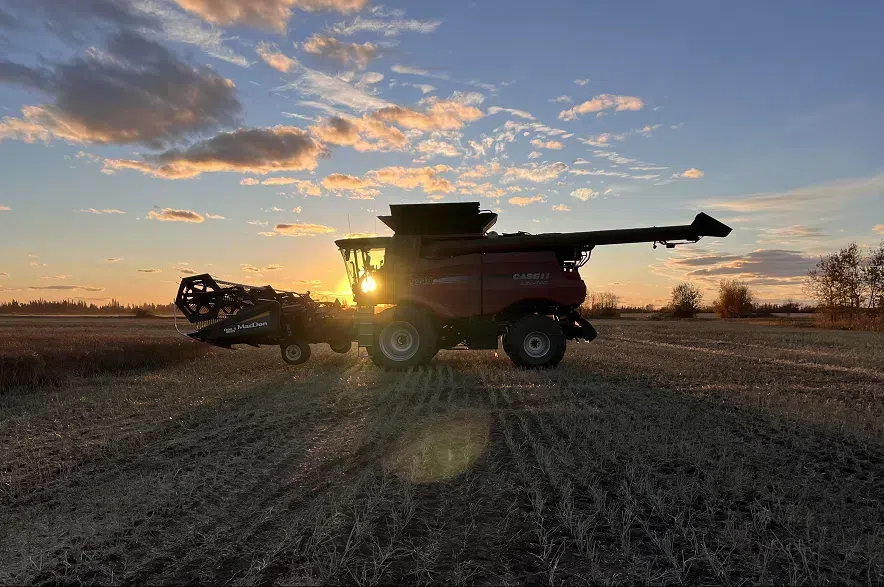Dry conditions over the past week let Saskatchewan producers make good progress on harvest.
According to the latest crop report from the Ministry of Agriculture, which covered the week ending on Monday, harvest is 23 per cent complete across the province, up from 11 per cent reported the week prior. But while the dry conditions let farmers make significant progress over the past week, progress remains behind the five-year average of 40 per cent and the 10-year average of 34 per cent.
Read more:
- Canadian farmers weigh plans as Chinese tariff hits canola price
- Above-average temperatures, dry conditions welcome as harvest approaches
- LISTEN: Sask. farmer sizes up growing season as combines hit the fields
Harvest is furthest along in the southwest region (39 per cent), followed by the southeast (33 per cent). In west-central part of the province, on the other hand, only 10 per cent of crops have been combined.
More than 90 per cent of the winter wheat crop has been harvested, the ministry added, along with 88 per cent of fall rye. Farmers are also making good progress with pulse crops, with 73 per cent of field peas and 60 per cent of lentil crops already in the bin.
“Producers were happy with the limited rainfall that allowed them to make steady harvest progress, but this also caused a slight decline in topsoil moisture levels,” the ministry explained in its report.
“Producers are hopeful for rain following harvest to help replenish soil moisture conditions and mitigate fire risk.”
During the week ending Monday, topsoil moisture levels in cropland were rated as two per cent surplus, 67 per cent adequate, 29 per cent short and two per cent very short.
While the dry conditions did allow for good progress on harvesting operations, the ministry noted that a lack of moisture and high winds caused some crop damage over the past week.
“Crop regrowth and lodging have caused some challenges for producers while combining,” the ministry added.
“Grasshoppers and bertha armyworms continue to cause minor crop damage in some regions of the province.”
Producers across the province were reminded to keep the high fire risk in mind as they work to harvest their crops.
“In addition to carrying fire extinguishers on equipment, producers are encouraged to have water trucks and tillage equipment on standby to mitigate risk,” the report noted.











